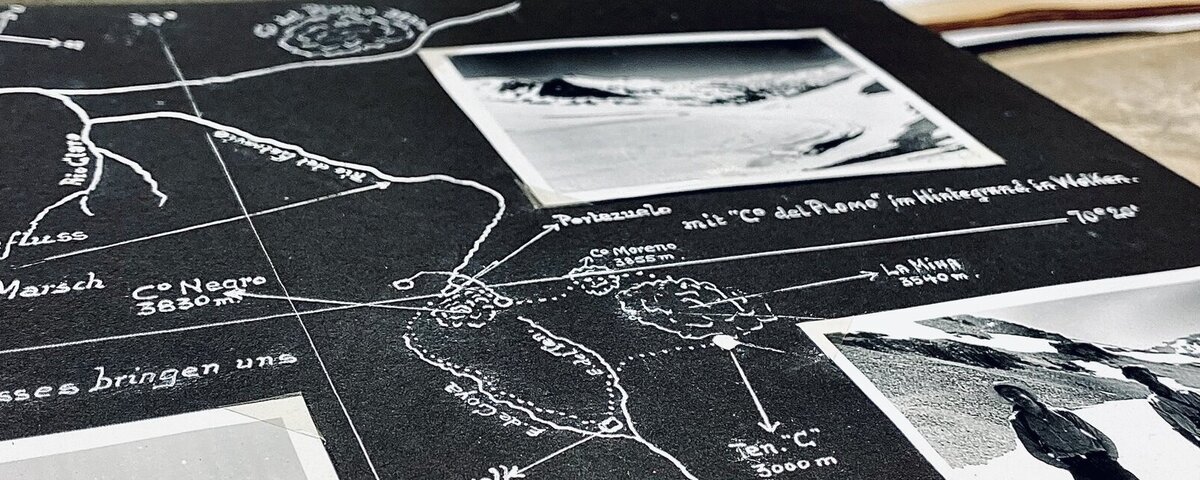About the photo library
The Image Archive of the Ibero-Amerikanisches Institut (IAI) comprises a total of 216,950 image documents. These include photographs, slides, photographic glass plates, film negatives, and postcards. Most of the materials are part of the bequests held by the institute and are closely linked to the IAI's other special collections. The photographs relate to Latin America, the Caribbean, Spain, and Portugal. The Image Archive contains image documents dating from 1860 onwards and many items from the early years of photography.
The materials in the IAI's image archive are particularly interesting and important for national and international research because they are research data that are in a common context with manuscripts, notebooks, letters and drawings of excavation sites and buildings as well as books and journals in the Institute's library. For example, the estate of the German-Austrian architect and photographer Teobert Maler (1842-1917), who is considered one of the pioneers of research into Mayan ruin sites in Mexico and Guatemala, contains not only his notebooks, manuscripts, letters and architectural drawings, but also numerous photographs that document, among other things, the condition of pre-Columbian buildings at the time and are therefore still of great value for research today, precisely because they are recorded and accessible in the IAI in the context of his entire estate.
The legacies of Hans Steffen, Max Uhle, Eduard Seler, Arthur Posnansky, Erich Zurkalowski and Walter Lehmann include photographs by the Peruvian photographer Max T. Vargas (ca. 1874-1959), especially images of landscapes, excavation sites, cities and buildings in Peru and Bolivia. The legacies of Walter Lehmann and Max Uhle also contain portraits, landscape photographs and photographs of archaeological excavation sites, for example Machu Picchu and Cusco, by Martín Chambi (1891-1973), who worked as Max T. Vargas' assistant from 1908. Part of Max Uhle's estate includes photographs by the Austrian-born naval architect Arthur Posnansky (1873-1946), who arrived in Bolivia around 1900 and conducted research into Bolivian archaeology and antiquity, in particular Tiahuanaco. These are black and white photographs of Tiahuanaco, Isla del Sol and Isla de la Luna.
The image archive of the photographer Hugo Brehme (1882-1954) from Eisenach, who settled in Mexico in 1908 after traveling through Africa and Central America and founded a photo studio there, is exemplary for the close interlinking of the estates with the photo collections and the holdings of the IAI library. The photographic prints were made in 1927 by the librarian Herrman B. Hagen directly from Brehme's photo studio or come from the estates of Walter Lehmann and Eduard Seler. The photographs are of outstanding technical quality for their time and show a multifaceted picture of Mexico in the period 1910-1920. Several of the illustrated books published by Hugo Brehme and numerous secondary literature on Brehme's work are available in the IAI library. The photographs have been made available to the national and international public and researchers by the IAI in several exhibition and publication projects.
From the German photographer Emilio Biel (1838-1915), who emigrated to Portugal in 1857 and ran a photo studio in Porto, the IAI has photographs of traditional costumes and views of Porto around 1900.
The IAI's 8,300 photographic glass plates and 1,100 film negatives were catalogued and largely digitized in 2013 as part of an indexing project funded by the Federal Commissioner for Culture and the Media (BKM, Beauftragte der Bundesregierung für Kultur und Medien). The digital copies are available via the online catalog (external link, opens in a new window) and the IAI's Digital Collections (external link, opens in a new window). The Image Archive of the Ibero-Amerikanisches Institut, IAI (Ibero-American Institute, IAI) holds nearly 2.400 postcards (PDF, 344.52 KB) (opens in a new window), (this file is not accessible). Out of respect for cultural sensitivities, access to individual images may be restricted.
Information on the Photo Library's holdings is available via a keyword search under „Search in the Image Archive” (A-Z).
